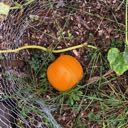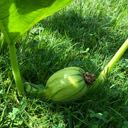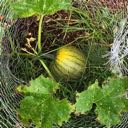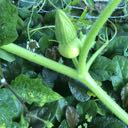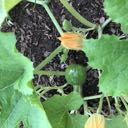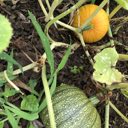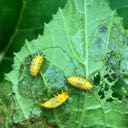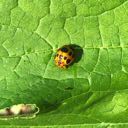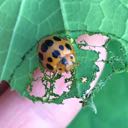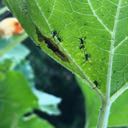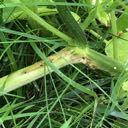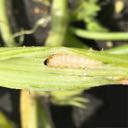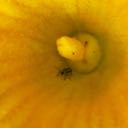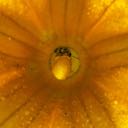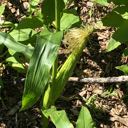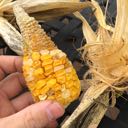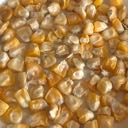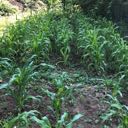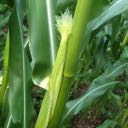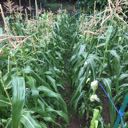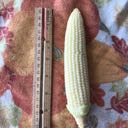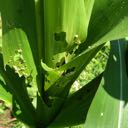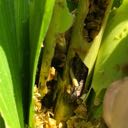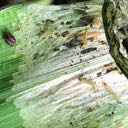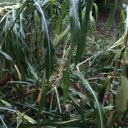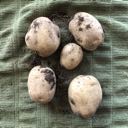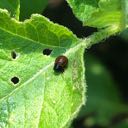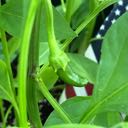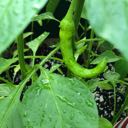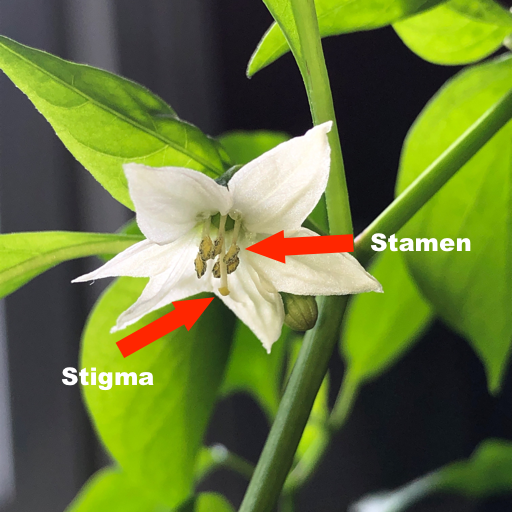As a non-computer hobby, I grow a random assortment of fruits and vegetables. This page collects the knowledge about plantings, pests, and techniques I’ve found for getting better crop yields.
Note: I’m by no means a professional, and this page is as accurate as I can possibly make it. Don’t be upset if you follow and advice here and it doesn’t work for you. Do additional research about the methods described here to see if they are right for you!
Click image thumbnails to view full resolution.
Pumpkins
- Planting Instructions here
- Planted
- 2016, 2017, 2018 - 5 jack-o-lantern plants, yielded 5 pumpkins.
- 2019 - 20 plants
- Miniature pumpkins
- Jack-o-lanterns
- Cinderella pumpkins
- Sugar Pumpkins
- Atlantic Giant Pumpkins
Pumpkin Pests
So far the only pest I’ve encountered are squash bugs & beetles.
Lady Squash Bugs
https://web.archive.org/web/20200107134238/https://ipm.uconn.edu/documents/raw2/html/672.php?aid=672
These are NOT Ladybugs. If at fist glance it looks like ladybugs are consuming the leaves and fruit of, squash, cucumbers, etc, check this page out for a description!
- To handle them, my method of removal is to use a jar of liquid dish soap + water, and gently brush them into it. I’m experimenting with potentially spraying leaves with soap water as a deterrent but prefer not to contaminate the area with chemicals (even if it is just soap). This also applies to normal Squash Bugs as well.
- 2019: First squash bugs appeared
2019-06-28
Squash Bugs
https://web.archive.org/web/20220201000000*/https://www.ladybug.uconn.edu/FactSheets/squash-bug.php
- Look like stink bugs
- Their eggs are small golden brown dots that appear on the undersides and tops of leaves. These can be destroyed by removing the part of the leaf (which will damage the plant) or by removing them with duck tape. Crush them between your fingers until they pop to ensure they won’t hatch.
- 2019: First squash bugs appeared
2019-07-04
Squash Vine Borers
https://extension.umn.edu/yard-and-garden-insects/squash-vine-borers
- Can be detected by a sawdust-like material outside of a hole in the vine.
- Can be extracted by slicing the vine and removing, although this may damage the plant
- Can also be handled by inserting a wire into hole if they haven’t burrowed too deep.
- If you’ve been burying the vine to promote root growth along the entire length, I’ve been experimenting with simply removing the affected section and trying to determine how it affects yields and the vine’s overall growth.
Cucumber Beetles
https://extension.umn.edu/yard-and-garden-insects/cucumber-beetles
- These beetles feed on flowers and leaves, making them wilt and die.
Pumpkin Notes
2019-05-25Planted all varieties.2019-07-06Lightly applied a5-10-5fertilizer around the atlantic giant plants.2019-07-20Found multiple squash vine borers
Carrots
-
Planting instructions here
-
Planted:
- 2016, 2017, 2018 - 2 rows orange carrots.
- 2019 - 1 row orange, 1 row blended.
- 2019 - Planted additional rows
Corn
-
Planting Instructions here
-
Planted
- 2018: 3 stalks
- Notes: poor pollination caused the resulting corn to not have enough kernels.
- 2019
- 5 15’ rows of hybrid sugar enhanced corn
- 4 8’ rows of bantam organic corn (planted 1mo after the hybrid)
- 1 row of ornamental indian corn.
- 2018: 3 stalks
-
Notes:
- I had an issue where some of the corn blew over during high winds while it was still young. To fix this, I simply created a mound of dirt around each stalk.
- Corn does not like to be transplanted. As an experiment, I transplanted 3 corn stalks. They mostly survived, but their growth was stunted and many leaves died.
- Leaving corn on the stalk seems to be a good method for getting seed from organic corn.
- If planting multiple varieties close together and at the same time, you’ll need to hand pollinate in order to prevent cross-contamination of the pollen. A guide is here
Corn Pests
Corn Borers
http://ipm.uconn.edu/documents/raw2/European%20Corn%20Borer/European%20Corn%20Borer.php?aid=66)
- Catch early and remove manually
- Enter inner stalk and consume plant matter.
- Produces waste products similar to that of the Squash borer.
Tent Caterpillars
- These will consume most leaves. To remove them, I clipped the affected leaves and isolated them in a plastic bag.
Racoons / Other Large Wildlife
- Racoons like corn a lot, and seem to know exactly when it’s about to be picked. Above’s a picture of some of the damage to my corn after a racoon attack.
- Video of racoon inspecting corn
- The Same Racoon travelling towards the plot
Saddleback Caterpillar
https://en.wikipedia.org/wiki/Saddleback_caterpillar
- Saddleback caterpillars aren’t so much of a pest (they do munch on leaves, but nothing too major).
- Can be identified by a bright green back with brown spot surrounded by white circle, and four brown antennae with spikes.
- Touching them causes a nasty sting that lasts several hours and burns. I’ve been stung - not super fun.
Corn Notes
2019-04-28- Planted Sugar Enhanced Hybrid2019-05-20- Planted Indian Ornamental Corn2019-05-25- Planted Organic Sweet Corn2019-07-06- My corn appears to have been nutrient defficient - as told by the yellowing of the bottom leaves. I applied a45-0-0fertilizer in between rows directly before a rainstorm. info.2019-07-14- Tassels Emerged (SE Hybrid)2019-07-16- Silks Emerged (SE Hybrid) R1 Stage2019-07-17- After major storm most of the corn was blown over. Used stakes + ropes to tie them up and support growth. Roots do not appear to be as strong as they should be, possibly due to shallow planting2019-07-19- Pollination has begun (SE Hybrid)2019-07-21- Ear Count: 155 (SE Hybrid)2019-07-21- Noticed first tassels (Organic corn)2018-07-21- Discovered Eurpoean Corn borers consuming two stalks.2018-07-26- SE Hybrid ears have entered the R2 Stage2019-08-05- Organic Sweet corn has entered R1 Stage2019-08-16- Organic Sweet corn has entered R1 Stage
Potatoes
- Planting Instructions here
- Plantings:
- 2019 - 10 Plants.
Potato Pests
I’ve encountered both potato beetles and aphids on my potato crop.
Colorado Potato Beetle
https://entomology.ca.uky.edu/ef312
Aphids
Potato Diseases
- White Mold / Sclerotinia stem rot - A white mold that grows on the stem of the potato plant just below the soil. see also
Potato Notes
2019-05-17- Planted 10 White Superior Seed Potatoes2019-07-14- Harvested first batch of young potatoes2019-07-20- Harvested second batch of potatoes. Left smaller ones and plants for potential third batch.
Peppers
I started my peppers inside from seed early in the year (around April), and transferred them outside after the ground thawed and the temperature rose high enough.
- Planted:
- 2019 - Jalapeños + Red Cayenne peppers - 24 plants.
- Notes:
- Peppers seem very picky about temperatures. Be careful not to plant too early outdoors or they may turn white.
I moved some of my potted peppers inside during the winter. They started producing peppers around the 10th of April, 2020.
Hand-Pollination
I’ve found it much more reliable to hand-pollinate my peppers when growing indoors (and outside too if there’s few pollinators). Peppers can reproduce on their own, but it can increase the chances of one being fertilized if you manually transfer the pollen. Here’s how I do it.
First - there’s a couple parts of the flower to be aware of:
- Stigma - the female part of the flower. It’s the end of the white portion coming from the end of the pepper.
- Stamen - the male portion, which produces the pollen. They’re the shorter parts that surround the stigma.
When you hand-pollinate, you’re transferring the pollen from the Stamen to the flower’s Stigma.
I found this site which provides more detailed diagrams and info on cross-breeding: https://www.fatalii.net/Growing_chile_peppers/Breeding
Pepper Notes
2019-07-13- First pepper appeared on jalapeño plant.2020-04-10- (indoors) first pepper appeared on jalapeño plant.
Miscellaneous
I use pie tins as a repellent for larger predators like birds, etc. To set them up, I cut a small hole and use a 1.5’ piece of string/twine and tie it to a stake or metal fence.

